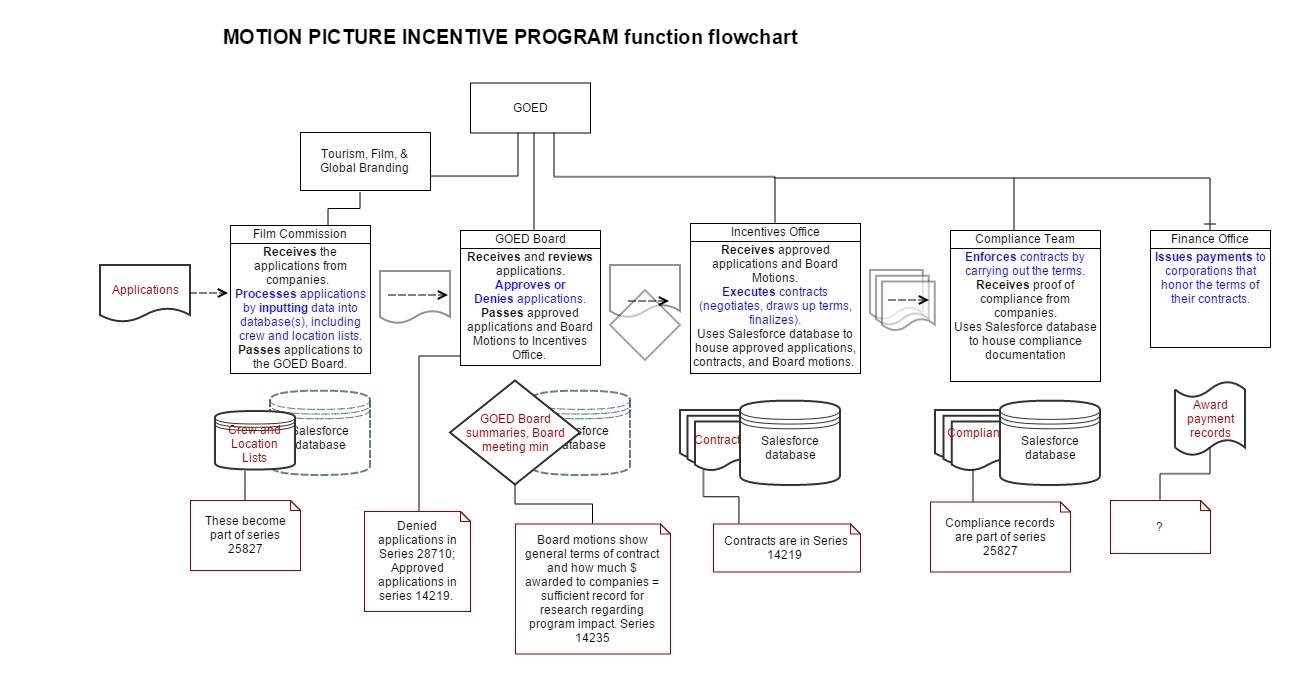
|
Records Management Essentials |
Home  Records Management Essentials
Records Management Essentials  Section 2
Section 2  2.3. Understanding the functions of your agency and the records you should create and maintain
2.3. Understanding the functions of your agency and the records you should create and maintain
2.3. Understanding the functions of your agency and the records you should create and maintain
Governmental entities exist in order to carry out the public’s business.1 The particular function or business that a governmental entity is responsible to carry out is defined in law. The chief administrative officer of an agency, with the help of her/his records officer(s), must make sure that records are created to enable the governmental entity to effectively carry out its mission and to document accountability for the fulfillment of its mission. For example, Fleet Operations is charged with handling state vehicle acquisition, repair, preventative maintenance, and fueling. The division will need to keep records in order to document which cars were acquired, who drives the cars, and when and where they were fueled; the division will need to keep maintenance records for all cars. Every chief administrative officer and records officer should analyze their agency’s functions and not only consider the records that the governmental entity is currently keeping, but fundamentally consider whether or not their record keeping is adequate. They should also consider whether or not unnecessary records are being created.
Begin your analysis by conceptualizing what your agency does and how it does it. Each government agency has administrative functions and unique business functions. Administrative functions include processes such as human resource management, budgeting, and policy creation, and are held in common by many government agencies, although they may be centralized for state agencies (e.g. Department of Technological Services). Unique business functions support particular services, such as mosquito abatement, Medicaid eligibility screening, or overseeing horse race meets in the state of Utah. Agency functions can often be found in state statute or city ordinances.

Created by Kendra Yates
After identifying your agency’s functions, think about how you document what your organization does; this will demonstrate how your agency’s records relate to its business processes. From this analysis you could create a document that shows your agency’s functions, activities, and transactions in a hierarchical relationship, or a diagram of your processes that illustrates the points at which records are produced or received as a result of agency activities. Pictured above is an example of a workflow chart for the Utah Film Commission’s application process to participate in the Motion Picture Incentive Program. This type of evaluation is especially vital to perform in an electronic business environment where adequate records will not be captured and retained unless a records management system is designed with forethought and understanding regarding the agency’s functions.2
1Government Records Access and Management Act, Utah Code Ann. §§ 63G-2-103 (Supp. 2014). Accessed February 18, 2015. http://le.utah.gov/xcode/Title63G/Chapter2/63G-2-S103.html.
2ISO 15489-2:2001(E): Information and documentation – Records management – Part 2: Guidelines. International Organization for Standardization, Geneva, Switzerland, 3-4.